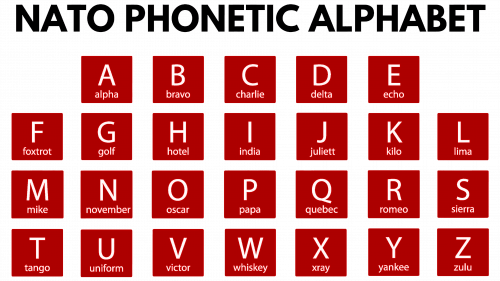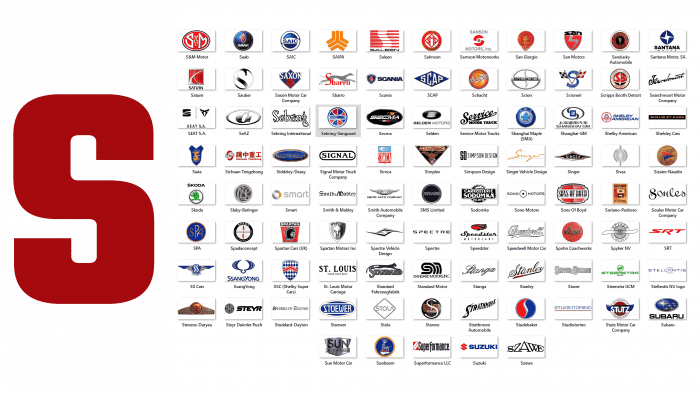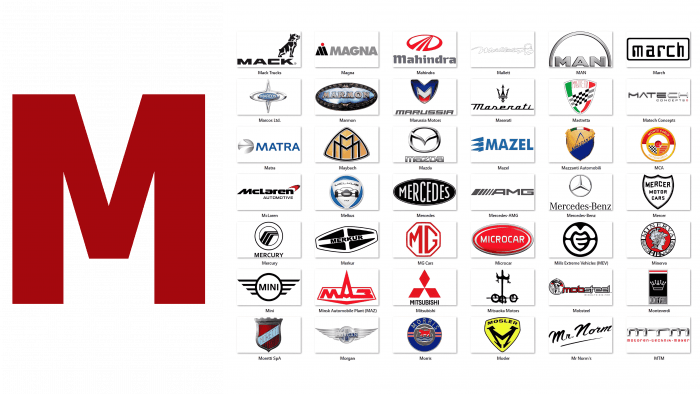Although most languages have standard alphabets, some situations and contexts require specialized communication systems. One prime example is the military alphabet. The U.S. military developed this unique system to solve problems encountered in radio transmissions and other communications on the ground, in the sky, or in the water.
In the harsh and unpredictable military environment, ordinary communications can be subject to misinterpretation. Equipment noise, natural elements, and even enemy interference can distort messages, leading to potentially serious consequences. Realizing this, the military developed an alternative to the standard English alphabet. Each letter is represented by a separate and easily recognizable word, ensuring that information is clearly communicated even in the face of interference or poor communication. For example, the letter “A” is labeled as “Alpha,” “B” as “Bravo,” etc.
Due to its focus on clear pronunciation and distinction of letters, this system was called the “phonetic alphabet.” Over time, its effectiveness was recognized, and not only by the military. Various industries, especially those requiring precise communication, such as aviation and maritime, adopted the system.
The phonetic alphabet is a testament to the importance of clear communication, especially in critical situations. By turning potential communication barriers into an organized system, the military has developed an effective and universal method of conveying messages without ambiguity.
A Brief Overview of History
In the 1920s, the International Telecommunication Union took the initiative to create a standardized phonetic system. The primary motivation was to facilitate and improve the clarity of communication, especially in voice transmission where conventional alphabets could be misheard or misinterpreted. A distinctive feature of the 1927 system was the use of city names as representatives of each letter. For example, instead of “Alpha” for the letter “A,” the name of the city was used.
However, with the development of communication technology and the world plunging into the chaos of the 1940s, there was a need for a more organized and universally understood system. The Abele Backer alphabet was born. Appearing during this tumultuous decade, it did away with city names and moved to clearer and more recognizable words. The letters “A” and “B” came to be labeled “Able” and “Backer,” respectively, setting the tone for the rest of the alphabet. This shift marked the transition to the modern military phonetic system.
Comparing the 1927 alphabet to the Able Backer alphabet allows us to trace the evolution of the means of communication. It demonstrates the constant need for adaptation and innovation, especially in critical areas such as communication. Whether civilian or military, ensuring clear and efficient messaging remains paramount. The creation of the phonetic alphabet is a testament to the relentless pursuit of this goal, from the use of city names to the isolation of words that ensure each letter is clearly conveyed, regardless of external interference.
| Letter | The 1927’s alphabet | Able Backer Alphabet (1940’s) |
|---|---|---|
| A | Amsterdam | Able |
| B | Baltimore | Baker |
| C | Casablanca | Charlie |
| D | Denmark | Dog |
| E | Edison | Easy |
| F | Florida | Fox |
| G | Gallipoli | George |
| H | Havana | How |
| Ι | Italia | Item |
| J | Jerusalem | Jig |
| K | Kilogramme | King |
| L | Liverpool | Love |
| M | Madagascar | Mike |
| N | New-York | Nan |
| O | Oslo | Oboe |
| P | Paris | Peter |
| Q | Quebec | Queen |
| R | Roma | Roger |
| S | Santiago | Sugar |
| T | Tripoli | Tare |
| U | Upsala | Uncle |
| V | Valencia | Victor |
| W | Washington | William |
| X | Xanthippe | X-ray |
| Y | Yokohama | Yoke |
| Z | Zurich | Zebra |
A look back in time shows that some letters from earlier phonetic systems have retained their place in the official military alphabet. Their stability is a testament to their effectiveness and clear articulation in a wide variety of contexts. While some letters changed, others proved to be stable and commonly understood, making them indispensable.
NATO’s adoption of the current version in 1956 cemented its status and importance in global military communication. This move led to the standardization of the phonetic alphabet in NATO member countries and reflected a consensus on the best words for each letter for clarity. A notable feature of this version is its stability: for more than six decades, there has been no need to change or adjust it. This stability is a testament to the effectiveness of the system and the thoroughness of its design.
The Military Alphabet
The development of a universally recognized phonetic alphabet was a painstaking undertaking, requiring global consideration and comprehensive analysis. It was not only about clarity but also about cultural sensitivity, linguistic universality, and ease of information transfer.
The cornerstone selection criterion was the availability and consistent pronunciation of the word in the three major languages of the world: English, French, and Spanish. This ensured a broader global understanding and reduced the likelihood of misinterpretation. Given the wide distribution of these languages, it was considered essential that any word for a letter be familiar to speakers of these languages.
Another important requirement was ease of pronunciation and comprehension, especially when using communication devices such as telephones and radios. Often used in high-stress situations, these channels require clarity and minimal ambiguity. Therefore, direct, clear words less prone to muting or distortion were chosen.
The connotations and associations associated with the words were scrutinized. In a culturally and religiously diverse world, it was necessary to avoid words that might appear pejorative, inappropriate, or offensive in any context. The challenge was to be as neutral as possible, avoiding possible misunderstandings and casual insults.
The 1956 version was the culmination of this careful selection. Apart from being a simple list of words corresponding to letters, it is a testament to international cooperation and the desire for clarity in communication.
| Symbol | Code Word | Morse Code | Phonic (pronunciation) |
|---|---|---|---|
| A | Alfa/Alpha | ● ▬ | (AL-FAH) |
| B | Bravo | ▬ ● ● ● | (BRAH-VOH) |
| C | Charlie | ▬ ● ▬ ● | (CHAR-LEE) or (SHAR-LEE) |
| D | Delta | ▬ ● ● | (DELL-TAH) |
| E | Echo | .● | (ECK-OH) |
| F | Foxtrot | ● ● ▬ ● | (FOKS-TROT) |
| G | Golf | ▬▬ ● | (GOLF) |
| H | Hotel | ● ● ● ● | (HOH-TELL) |
| I | India | ● ● | (IN-DEE-AH) |
| J | Juliet | ● ▬ ▬ ▬ | (JEW-LEE-ETT) |
| K | Kilo | ▬ ● ▬ | (KEY-LOH) |
| L | Lima | ● ▬ ● ● | (LEE-MAH) |
| M | Mike | ▬ ▬ | (MIKE) |
| N | November | ▬ ● | (NO-VEMBER) |
| O | Oscar | ▬ ▬ ▬ | (OSS-CAH) |
| P | Papa | ● ▬▬ ● | (PAH-PAH) |
| Q | Quebec | ▬ ▬ ● ▬ | (KEH-BECK) |
| R | Romeo | ● ▬ ● | (ROW-ME-OH) |
| S | Sierra | ● ● ● | (SEE-AIRRAH) |
| T | Tango | ▬ | (TANG-OH) |
| U | Uniform | ● ● ▬ | (YOU-NEE-FORM) or (OO-NEE-FORM) |
| V | Victor | ● ● ● ▬ | (VIK-TAH) |
| W | Whiskey | ● ▬ ▬ | (WISS-KEY) |
| X | X-ray | ▬ ● ● ▬ | (ECKS-RAY) |
| Y | Yankee | ▬ ▬ ● ● | (YANG-KEY) |
| Z | Zulu | ▬ ▬ ▬ ▬ ▬ | (ZOO-LOO) |
In this “Alphabet” one finds an intriguing mixture of a variety of elements: names, places, and references to the Greek lexicon. It is fascinating to think that disparate words that may be commonplace in one place and exotic in another are brought together to serve a single, important purpose.
Today, the importance and application of this phonetic system extend far beyond its original military roots. It is an essential tool of maritime communication: sailors traversing the oceans use it to clearly articulate messages. Similarly, law enforcement agencies use it to minimize misunderstandings by ensuring that every message conveyed is accurate and unambiguous. In emergency and serious operations, emergency services also rely on this alphabet to convey information quickly and accurately.
For the aviation industry, it is not just a useful tool but an integral part of the communication system. Every airline, regardless of its origin or the language spoken by its crew, uses this phonetic alphabet. The same can be said for airports around the world. It bridges the gap between different languages and dialects, ensuring that any communication from takeoff to landing is unambiguous.
The Military Numbers
The ICAO phonetic alphabet, known for its standardized designation of letters, also includes a special system for the pronunciation of numerals. The purpose of this unification is to eliminate possible confusion when communicating. This is especially important in high-pressure environments, where even minor misunderstandings can lead to serious complications.
Numbers, like letters, sometimes sound the same, especially on radio frequencies or in telephone communications, where interference can distort the clarity of pronunciation. Therefore, the pronunciation of numerals in the ICAO phonetic system is designed to ensure that they are distinguishable.
For example, digits that may sound similar or share phonetic characteristics with some letters have been modified. This distinction ensures that digits and letters are clearly distinguished and that there is no room for ambiguity, regardless of the speaker’s native language or accent.
| Symbol | Morse Code | NATO Word | Phonic (pronunciation) |
|---|---|---|---|
| 0 | ▬ ▬ ▬ ▬ ▬ | Zero | Zero (ZEE-RO) |
| 1 | ● ▬ ▬ ▬ ▬ | One | (WUN) |
| 2 | ● ● ▬ ▬ ▬ | Two | (TOO) |
| 3 | ● ● ● ▬ ▬ | Three | (TREE) |
| 4 | ● ● ● ● ▬ | Four | (FOW-ER) |
| 5 | ● ● ● ● ● | Five | (FIFE) |
| 6 | ▬ ● ● ● ● | Six | (SIX) |
| 7 | ▬ ▬ ● ● ● | Seven | (SEV-EN) |
| 8 | ▬ ▬ ▬ ● ● | Eight | (AIT) |
| 9 | ▬ ▬ ▬ ▬ ● | Nine | (NIN-ER) |
| Decimal Point | ▬ ▬ ▬ | Decimal | (DAY-SEE-MAL) |
| 00 | Hundred | (HUN-DRED) | |
| 000 | Thousand | (TOU-SAND) |
Phrases and designations. Alpha code.
The military alphabet, better known as the phonetic alphabet, is not limited to simplifying the transmission of individual letters. Its capabilities extend to composing complex messages using the alpha code. It is a specialized set of trigrams – groups of three phonetic letters – that can be used to concisely and unmistakably convey a potentially complex message.
To the uninitiated, it may seem like a mere set of acronyms. However, the usefulness of Alpha Code is evident in various operations where speed and clarity of information transfer can be of paramount importance. Let’s understand its subtleties in detail.
The essence of the Alpha code lies in its flexibility. Depending on the context and the nature of the operation, the meaning of Alpha Code can change. In one situation, “Romeo Tango Bravo” may mean return to base, and in another – “Romeo Mike Victor” may warn about the need for medical evacuation.
However, the “Alpha Code” does not always mean communicating in raised tones. Sometimes, it uses colloquial terms, incorporating them into its vocabulary for operational communication. For example, “Hotel Alpha,” although seemingly neutral at first glance, is an abbreviation for “Haul ass,” a phrase that implies urgency. Similarly, “Bravo Sierra” might be perplexing in normal conversation, but in a military environment, it’s a quick way to dismiss something as nonsense.
The phonetic alphabet also serves as a compass, providing orientation without ambiguity. Each cardinal point of the compass has its own phonetic designation:
- “November” is north.
- “Sierra” is south.
- “Whiskey” is west.
- “Echo” is east.
When paired together, they unmistakably indicate intermediate directions. Thus, “November Whiskey” would mean northwest, eliminating the possibility of misinterpretation even in complex communication contexts.
The integration of alpha code and phonetic directional symbols in the military alphabet embodies the need for precision, clarity, and efficiency in a highly competitive environment. It is a combination of linguistic skill and practical necessity, honed over years in the service of global military and strategic operations.





